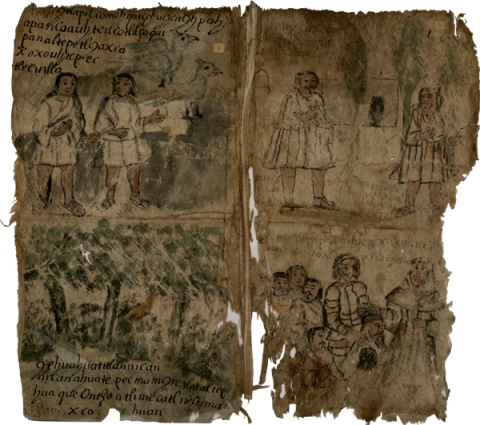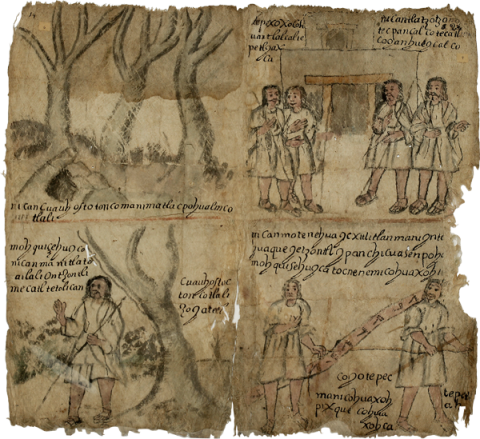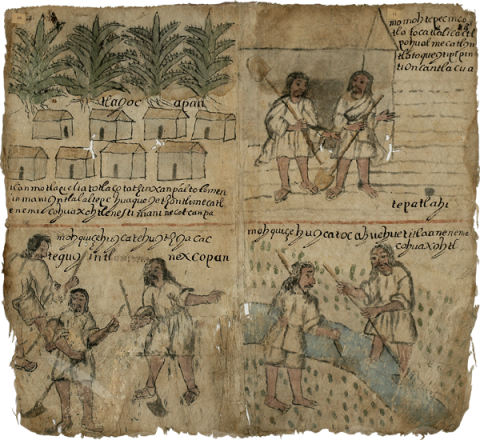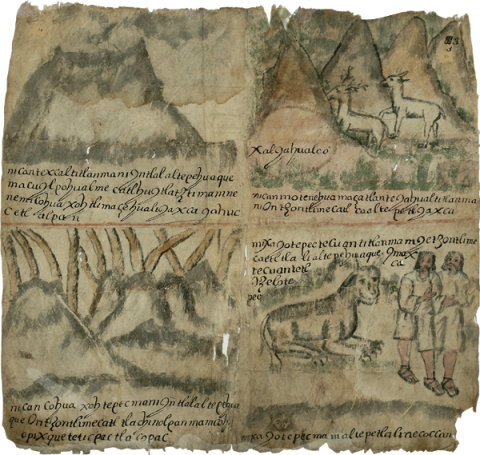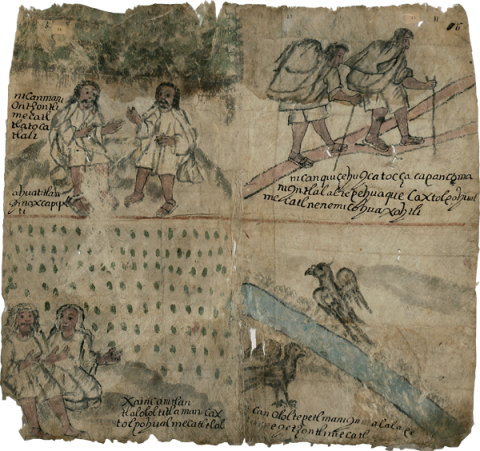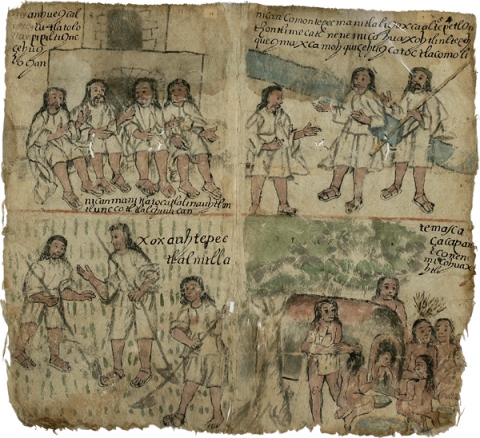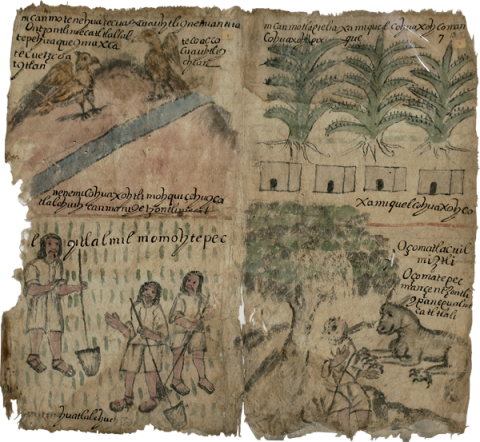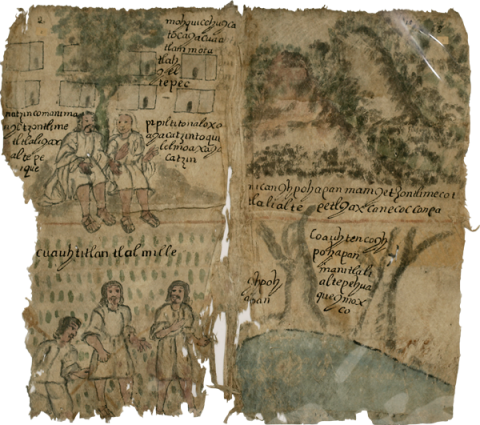This manuscript is in the private collection of Sean Galvin in Ireland, who kindly provided the photographs for this publication. We have not had access to accompanying materials, such as the manuscript map that identifies places named in the manuscript, the letters about the manuscript written by Wigberto Jiménez Moreno, nor the detailed analysis and English translation. These are all things mentioned in the Handbook of Middle American Indians, vol. 14, p. 272. The same source states that the Newberry Library has a nineteenth-century copy in the unpublished vol. 10 of Kingsborough’s Antiquities of Mexico, which consists of 14 plates (mising pages 4 and 13) printed on vellum. This manuscript is a part of a corpus of manuscripts called Techialoyan Codices. They were possibly made to look sixteenth-century, or at least were part of an effort to capture an early, quasi pre-Hispanic style (which is why they have perhaps erroneously been called “codices”). But, they were made after 1650 by a workshop that sold them to central Mexican highland communities in need of documentation of their histories and territorial extensions. For a fuller study of Techialoyan manuscripts, see Stephanie Wood, “The Techialoyan Codices,” at http://whp.uoregon.edu/Lockhart/Wood.pdf This particular Techialoyan manuscript has an association with San Francisco Tepexozucan, in its modern-day spelling (from Tepexoxouhcan, place of the green hills), in the region of Tenango del Valle (modern-day Tenango de Arista), in the Toluca valley. This community is slightly northwest and across Highway 55 from Joquicingo; it is south of Santa María Jajalpa and southeast of Tenango. Another community that has been associated with this map in its bibliographic history is San Miguel Cuaxochco (Cuauhxochco, place of the boundary), but a community of this name has yet to be identified in the same vicinity. Perhaps it was a barrio of San Francisco Tepexoxouhcan. This Techialoyan is a part of a subgroup that was painted in what Alexander F. Christensen has called “double registers.” Christensen studied one of this subgroup, associated with San Cristóbal Coyotepec, in considerable detail, also describing the subset into which both manuscripts fit. For a PDF of his study of the Coyotepec manuscript, see: http://www.historicas.unam.mx/publicaciones/revistas/nahuatl/pdf/ecn27/e... He describes this type as bearing “two scenes painted on each page, one above the other, rather than the more common single scene.” He believes that ten manuscripts in the larger Techialoyan corpus belong to this subset of double-register manuscripts. This manuscript consists of a total of 32 scenes, two per page on each of 16 tall pages. Typical of the corpus, it emphasizes early Spanish-colonial history for a given community, and it strives to represent various parts of the community’s territory, sometimes giving measurements of the regions in “mecatl” (cords of an undetermined length, but possibly about 50 yards per cord, if mecatl was a Nahuatl translation for the “cordel” of late colonial New Spain).
